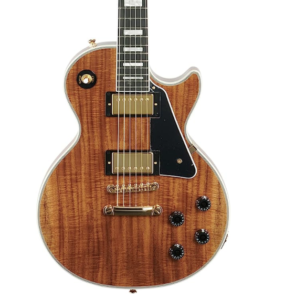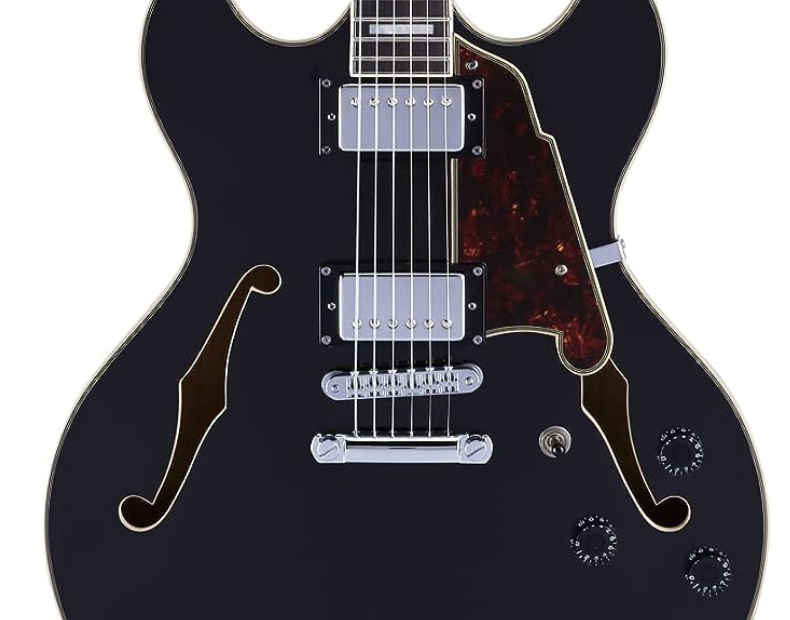When it comes to musical instruments, the guitar vs bass guitar are two of the most popular and versatile choices. Both instruments belong to the same family, but they play distinct roles in shaping the sound and rhythm of a band or ensemble.
Whether you’re a seasoned musician or a curious beginner, understanding the differences between the guitar and bass can help you make an informed choice that aligns with your musical aspirations.
The Basics
 The guitar and bass are both stringed instruments, but they have different numbers of strings and tuning. A standard guitar typically has six strings, while a bass guitar typically has four strings. The strings on a guitar are tuned EADGBE from the thickest to the thinnest string, whereas bass strings are usually tuned EADG, one octave lower than the lowest four strings of a guitar.
The guitar and bass are both stringed instruments, but they have different numbers of strings and tuning. A standard guitar typically has six strings, while a bass guitar typically has four strings. The strings on a guitar are tuned EADGBE from the thickest to the thinnest string, whereas bass strings are usually tuned EADG, one octave lower than the lowest four strings of a guitar.
One of the most significant differences between the two instruments is their sonic range. The guitar has a higher pitch and a wider tonal range, allowing it to cover both lead and rhythm roles in various music styles. Its bright and melodic sound is well-suited for playing chords, arpeggios, and intricate solos.
In contrast, the bass guitar provides the foundation of the rhythm section. Its lower pitch and deep, resonant sound are responsible for creating the groove and anchoring the band’s harmony. The bass fills out the lower end of the musical spectrum, enhancing the overall sound and providing the necessary rhythmic structure.
Also Read:
Classical Guitar vs Acoustic: Understanding the Differences
D’Angelico Guitars Review
Mooer PE100: A Compact Multi-Effects Pedal for Guitarists
Taylor 214ce-K Grand Auditorium vs Martin Guitar X Series D-X2E
Fender CD-60S Acoustic Guitar Review
Donner HUSH-I Guitar for Travel: The Ultimate Companion for Guitarists
BOOMERANG III Phrase Sampler: Guitar Effects Looper Review
Playing Technique
 The playing technique for the guitar and bass also differs significantly. Guitarists typically use a combination of picking and strumming with their fingers or a pick to produce notes and chords. They can play single-note melodies, complex chord progressions, and intricate fingerstyle patterns.
The playing technique for the guitar and bass also differs significantly. Guitarists typically use a combination of picking and strumming with their fingers or a pick to produce notes and chords. They can play single-note melodies, complex chord progressions, and intricate fingerstyle patterns.
Bass players predominantly use their fingers, employing techniques like plucking, popping, and slapping to create distinctive and groovy basslines. These techniques are essential for establishing the rhythmic pulse of the music and adding dynamic flair to the overall sound.
Role in a Band
In a band setting, the guitar and bass play complementary but distinct roles. The guitar often takes the lead, carrying the melody and playing solos, while also providing harmonic support through chord progressions. Guitarists are often the center of attention, drawing the audience’s focus with their expressive playing.
The bass guitar, on the other hand, works in tandem with the drums to form the backbone of the rhythm section. It establishes the beat and groove, locking in with the drummer to create a tight and cohesive foundation for the rest of the band. Bassists are often the unsung heroes, driving the music forward with their rhythmic prowess.
Versatility
 Both the guitar and bass offer tremendous versatility, and their role can vary depending on the musical genre and context. Guitars are commonly featured in genres like rock, blues, jazz, country, pop, and more. They are celebrated for their versatility, allowing guitarists to switch effortlessly between different styles and tones.
Both the guitar and bass offer tremendous versatility, and their role can vary depending on the musical genre and context. Guitars are commonly featured in genres like rock, blues, jazz, country, pop, and more. They are celebrated for their versatility, allowing guitarists to switch effortlessly between different styles and tones.
Bass guitars are essential in various genres, including funk, soul, R&B, reggae, and of course, rock and roll. While basslines tend to be more rhythmically focused, skilled bassists can add their flair and personality to elevate the music’s overall impact.
Personal Preference
Ultimately, the choice between guitar and bass boils down to personal preference and musical interests. If you are drawn to melodic playing, intricate solos, and the spotlight of a lead instrument, the guitar may be your calling. On the other hand, if you have a natural inclination for rhythm, enjoy being part of the heartbeat of the band, and appreciate the art of creating infectious basslines, the bass guitar might be your perfect match.
One of the primary distinctions between the guitar and bass lies in their roles within a band or musical ensemble. The guitar is often considered a melodic instrument, responsible for playing lead lines, solos, and captivating melodies. Guitarists have the freedom to showcase their creativity through intricate fingerpicking patterns, dynamic chord progressions, and expressive bends and slides.
On the other hand, the bass guitar has a predominantly rhythmic role. Its primary function is to maintain the groove and pulse of the music, ensuring that the band stays in sync. Bassists create infectious basslines that not only provide harmonic support but also add depth and texture to the overall sound.
Harmonic vs. Rhythmic Complexity
 Guitars, with their six strings and wide tonal range, offer a rich palette of harmonies and chords. Guitarists can create complex harmonies by stacking notes and crafting lush chord voicings. This harmonic complexity allows guitarists to explore various genres, from jazz and classical to rock and metal.
Guitars, with their six strings and wide tonal range, offer a rich palette of harmonies and chords. Guitarists can create complex harmonies by stacking notes and crafting lush chord voicings. This harmonic complexity allows guitarists to explore various genres, from jazz and classical to rock and metal.
Conversely, bass guitars typically have four strings, limiting their harmonic range compared to the guitar. However, this simplicity can be an advantage, as it allows bassists to focus on creating captivating rhythmic patterns that interlock with the drums. A well-crafted bassline can drive the energy of a song and elevate the entire performance.
Sonic Impact
Both instruments have distinct sonic characteristics that contribute to their overall appeal. Guitars are often celebrated for their brightness, clarity, and versatility. Whether it’s the crisp twang of a clean electric guitar or the searing overdrive of a distorted lead, the guitar can evoke a wide range of emotions and moods.
The bass guitar, with its lower register, brings a sense of warmth, depth, and power to the music. Its resonance lays the foundation for the entire ensemble, providing a solid backbone that allows other instruments to shine.
Composition and Songwriting
The choice between guitar and bass can also influence how musicians approach composition and songwriting. Guitarists may start with melodic ideas, building chord progressions or crafting memorable riffs that become the backbone of a song. Their role often involves shaping the song’s structure and providing the focal point for the vocals.
Bassists, on the other hand, may begin by establishing the rhythm and groove of a song. They work closely with the drummer to lock in the rhythm section, providing a sturdy framework for other instrumentalists to build upon. Basslines can dictate the overall feel of a composition, influencing the song’s tempo, dynamics, and atmosphere.
Collaboration and Synergy
In a band setting, the interaction between guitar and bass creates a powerful synergy. The interplay between these two instruments can elevate a performance, as they respond to each other’s musical ideas and embellish the overall sound. The rhythm and melody work in harmony to create a cohesive musical experience that captivates audiences.
